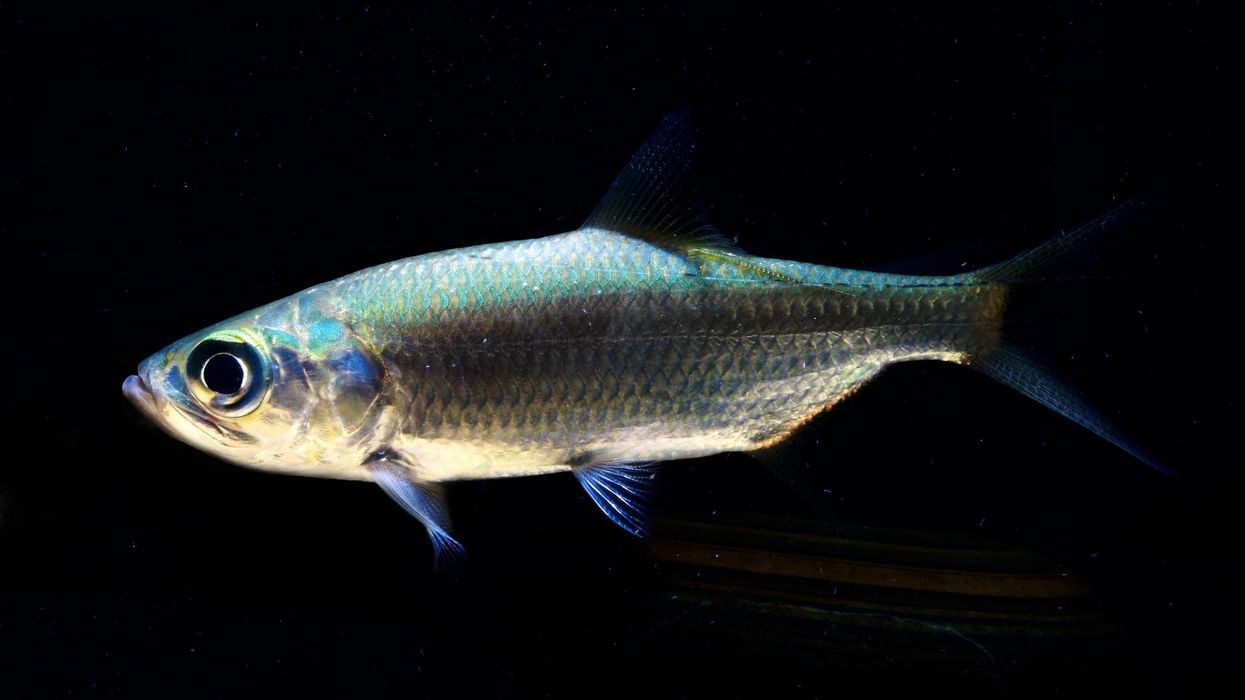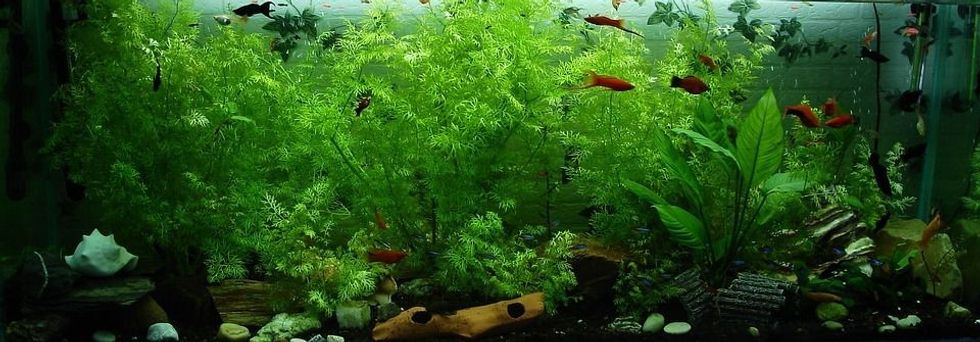Do you enjoy traveling from one place to another? Maybe take new adventures ever so often and see all that the world has to offer?
If this sounds like you, then you are not the only one with a taste for excitement!
The Indo-Pacific tarpon (Megalops cyprinoides), a fish mostly found in and around Indo-Pacific oceans, as well as the tropical rivers and smaller water bodies in and around these areas.
These versatile fish are known particularly for their ability to travel back and forth between salt and fresh water as they please, which makes them one of the very rare fish with the ability to do so.
In addition to their ability to travel different types of waters, they also travel moderately deep in the water and can eat smaller fish and other invertebrate animals. However, despite their amazing adaptability and their varied diet, the population of these fish is facing endangerment thanks to human intervention in their habitats and climate change.
If you enjoy reading about this tarpon fish, then do not hesitate to read on! You can also have a look at other unique fish like the round goby and spinner shark.
Indo-Pacific Tarpon Interesting Facts
What type of animal is an Indo-Pacific tarpon?
This Indo-Pacific tarpon (Megalops cyprinoides) is a type of fish.
What class of animal does an Indo-Pacific tarpon belong to?
Indo-Pacific tarpons (Megalops species) belong to the class of fish.
How many Indo-Pacific tarpons are there in the world?
Industrial landing and human disruptions are unknown to this fish, thus data on their numbers are lacking, though they are believed to be quite common across their habitats.
Where does an Indo-Pacific tarpon live?
The Megalops cyprinoides (Indo-Pacific tarpon) fish species live in the ocean. These fishes are amphidromous, which means they travel from the river to the sea and back again.
The tarpon can be found in both salt and fresh water in several tropical locations of Australia, including the Indo-Pacific Ocean's tropical, brackish seas and coastal areas. Other than tropical locations, they're found all throughout the world, including Japan, North Africa, South, and Southeast Asia.
What is an Indo-Pacific tarpon's habitat?
The Indo-Pacific tarpon is a widely distributed fishes that can be found in both freshwater and saltwater throughout its habitat. They are mainly encountered in estuaries or at the river mouth, where species often migrate in or out of freshwater as the tides change.
Sub-adult and young-of-year frequently travel to open-ocean spawning grounds to nutritionally environments supplied by estuaries and bay, whereas adults are typically seafaring. Many little specimens move upriver mouths and survive in freshwater pools of water. They also live in a variety of settings, including lagoons, bays, estuaries, open ocean, and more.
Who do Indo-Pacific tarpons live with?
These massive fish congregate in schools. Small schools range in shallow coastal water to locate prey for most of the year. They move in looking for food and to prepare for the breeding season. During the breeding season, these smaller schools band together to reproduce in much bigger groups.
How long does an Indo-Pacific tarpon live?
The Indo-Pacific tarpon (Megalops cyprinoides) fish species can live up to 44 years but mature in just two. In 10 days, they will have completed their metamorphosis from larvae to an adult.
How do they reproduce?
These fishes spawn primarily off the coast during the summer season. Females produce eggs, while men release sperm, which fertilizes the eggs. Females with larger reproductive organs can produce millions of eggs at once.
The eggs develop into larval fish within two to three days. A young fish requires at least six years to reach breeding age. While growing to spawn, youngsters of the species remain inshore and travel to coastal locations.
They usually breed twice annually. The larvae travel inland from the water and are leptocephalic types of fish. They may reproduce in both salted water of sea and freshwater.
What is their conservation status?
The Indo-Pacific tarpon (Megalops cyprinoides) fish are declared as Vulnerable species according to the IUCN Red List.
Indo-Pacific Tarpon Fun Facts
What do Indo-Pacific tarpons look like?
On top, it's olive green, and on the sides, it's silver. These species have glossy silver-colored scales with elongated bodies. The lower jaw has an extended, bony plate, and the huge mouth is directed upwards. The dorsal fin's final ray is substantially longer than others, almost touching the tail.
How cute are they?
Their elongated body with magnificent silver scales earns them one of the cutest fish.
How do they communicate?
Megalops cyprinoides (Indo-Pacific tarpons) communicate by making a thumping sound, which is caused by vibrations in the swim bladder. They occasionally make this thumping noise to scare predators away.
How big is an Indo-Pacific tarpon?
The Indo-Pacific tarpon size range is 1.6-5 ft (0.5-1.5 m). While the coastal-dwelling fish ladyfish is about 36 in (91.4 cm) in length.
Tarpons tend to be bigger in length than ladyfish. Tarpons that live in freshwater are often smaller than those that live in saltwater. Freshwater species grow to slightly over 20 in (50.8 cm) in length, whereas in saltwater the Indo-Pacific tarpon growth rate is much higher, with specimens reaching up to 5 ft (1.5 m).
How fast can an Indo-Pacific tarpon swim?
Although this seawater as well as freshwater fish swims at high speed their estimated speed range is not known due to lack of research.
How much does an Indo-Pacific tarpon weigh?
An adult size Indo-Pacific tarpon (Megalops cyprinoides) fish weighs up to 1.5-1.7 lb (783-800 g) in favorable conditions.
What are the male and female names of the species?
The male and female of Indo-Pacific tarpon (Megalops fish species) don't have any significant name.
What would you call a baby Indo-Pacific tarpon?
Babies of these (Indo-Pacific tarpon) Megalops fish have no particular title.
What do they eat?
These species of fish are opportunistic feeders, eating small fish, crabs, and even vegetation on rare occasions. Indo-Pacific tarpon fish species have a diet of herring and prawns in saltwater, but they also feed on a variety of other tiny fish.
In freshwater, there is no discernible shift in their feeding habits; they primarily eat bony bream and freshwater prawns.
The cyprinoides species is different from Atlanticus fish in that it prefers smaller foods than larger ones in its diet. The Atlantic tarpon fish is a species that lives in the Atlantic Ocean. Even when comparing two specimens of the same size, cyprinoides prefers smaller food, whereas Atlanticus will have both large and small foodstuffs.
Are they poisonous?
These marine, as well as freshwater fish, are not poisonous.
Would they make a good pet?
These enormous monsters are not suitable as pets. Even the smallest species can grow to be quite enormous.
They can also swim quickly and require a huge amount of space to move about. As a result, they are unsuitable for use in a home aquarium. If anyone maintains a tarpon without a particular license, they could face a hefty fee.
This fish is frequently seen in pelagic, or open sea, exhibitions in commercial a Indo-Pacific tarpon aquarium. Generally, the Indo-Pacific tarpon tank size is big in which they reside with a variety of other huge fish species like the red grouper fish.
The owner should meticulously monitor the temperature, salinity, pH, of tank water as well as feeding of pets to ensure that all of the fish receive the best possible care.
Did you know...
These fish suck the air from the surface, through which oxygen is absorbed by the swim bladder of fish, which acts as a lung. This implies it can range in places with low-level oxygen waters where other marine predators can't.
Tarpon flesh is loaded with little, difficult to clean bones, hence they are rarely eaten. It would be more difficult than a delight to consume as a stony, strong-smelling sea fish.
Different types of tarpons
There are two species of tarpon fish, one native to the Atlantic Ocean that is Megalops atlanticus, and the other is native to the Indo-Pacific Ocean named Megalops cyprinoides. The Atlantic fishes are the larger of the two species.
Indo-Pacific animals, for instance, spend more time in freshwater than Atlantic species.
Do tarpons bite?
The tarpon is reasonably safe to serve by hand since they lack sharp teeth, unlike so many other large fishes. Their mouths, on the other hand, are the texture of sandpaper. Its bite is a little painful.
Here at Kidadl, we have carefully created lots of interesting family-friendly animal facts for everyone to discover! Learn more about some other fish from our river cooter facts and pigfish facts pages.
You can even occupy yourself at home by coloring in one of our free printable Indo pacific tarpon coloring pages.










